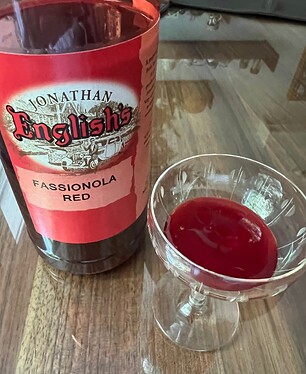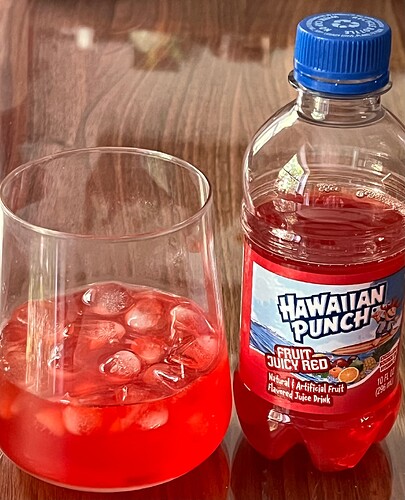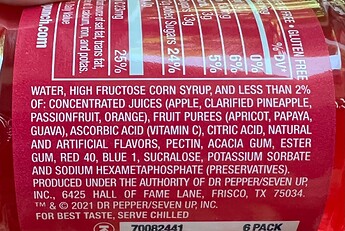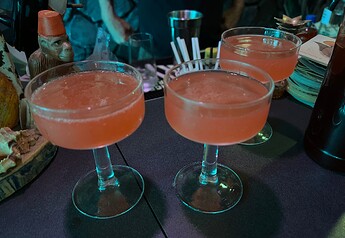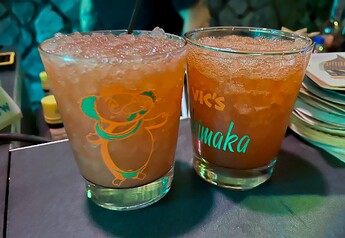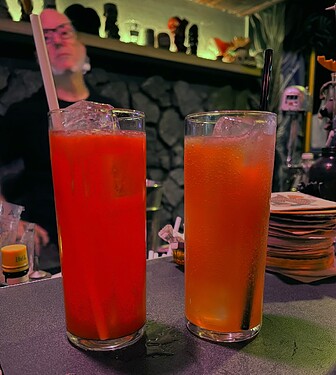The last several weeks of working with Beachbum Berry on some content for Total Tiki exposed me to research on Passionola, Fassionola and Hawaiian Punch, much of it done by Wit Ashbrook. The following is one (my) summation based on the evidence I’ve seen to this point.
Passionola is one of a few brands of passion fruit products that emerged in the 1930s and 1940s amidst a boom in passion fruit cultivation in the San Diego area. Tropical fruit, and passion fruit in particular, is challenging to distribute over long distances, so capturing the flavor in a shelf-stable, processed form was a compelling commercial solution. These syrups initially targeted the wholesale soda fountain market, and not long after, the drinks market, too. The brand Passionola seems to date to 1931, and was created by one of the main figures in the passion fruit boom: Victor Kremer, an industrious German immigrant.
Another significant agricultural boom was already underway in the territory of Hawaii. The main Hawaiian crop was pineapple, but other tropical fruits were grown there, too, and exported in various forms to California ports.
One company bridging both the California passion fruit market and the Hawaiian imports was Pacific Citrus Products Company of Fullerton. They developed a syrup that attempted a composite of tropical fruit flavors: pineapple, guava, papaya and passion fruit. They dyed it red and called it Leo’s Hawaiian Punch. Their syrup debuted in 1934. They were not alone: Passionola also developed a red syrup (and a green one). A short-lived also-ran was called Tropical Mystery. Which of these red tropical syrups came first is not yet clear, but there’s no question which best succeeded: in a matter of years, Leo’s Hawaiian Punch made a leap from ice cream topping to beverage syrup concentrate, and became so ubiquitous that its flavor profile became known as “fruit punch” and by the generic trademark Hawaiian Punch.
Meanwhile, Passionola had its ups and downs, and the picture becomes blurry in the 1940s and 1950s. The brand was changing hands, perhaps multiple times (as was Hawaiian Punch, and as comparable products were prone to do). When this sort of manufactured product changes hands, the product changes: it’s adapted to the new supply chains, facilities and priorities of the purchaser. Indeed, Passionola had already changed: when the initial market target was the soda fountain, Passionola was probably a pulpier sort of mixture suitable for spooning on ice cream. When Passionola was adapted for beverage use, the original straight passionfruit syrup was simplified to a smooth, more artificial syrup, and called “gold”. The quality trajectory for a product across these sorts of changes is almost always downward: more artificial, more compromised for the sake of efficiency and profit. The flavor profile inevitably drifts. One component is swapped for another here and there, and eventually, less of the original character remains.
Circa 1956, a new producer is selling gold, red and green syrups, clearly recycling the marketing materials of the old Passionola products, but now calling the products Fassionola, because the “F” was less sexualized to mid-Century Americans. And sooner or later, other companies are also selling Fassionola, because Fassionola was never trademarked, not to mention other syrups that tasted more or less similar that weren’t called Fassionola, because these are just fruit-flavored syrups, after all. Several steps removed from specific San Diego agriculture and the original Passionola, all these later syrups were likely degenerate to some extent or another. Still they found enough of a market that some have survived to today.
Hawaiian Punch is still a flavor profile seared into the minds of generations that grew up in the 50s, 60s, 70s, and 80s. The brand seems to have lost considerable ground in more recent decades. The culinary revolution has diversified interest in flavor, and even tricky fresh tropical fruits like passion fruit are available in many grocery stores. Today, the nondescript, anodyne fruit punch flavor profile is just not that interesting outside flights of nostalgia.
Perhaps more importantly, high quality frozen tropical fruit pulp is available in many markets. This pulp can be easily transformed into “juice” and syrups that possess vastly better flavor and texture than the artificial syrups of the past.
Some specific points:
-
I haven’t seen any evidence the Don the Beachcomber had anything to do with the creation of Passionola or Fassionola; although he was surely aware of it, I haven’t seen any evidence of him using it prior to the 1970s (which is the era of the recipes in the Phoebe Beach book)
-
Trader Vic mentions the stuff in the glossary of his some of his books, but I haven’t seen any evidence of him actually deploying it
-
It’s pretty likely that nobody knows what Passionola or even the 1950s Fassionola actually tasted like, so the claims of anyone marketing the stuff today should be taken with a grain of salt
